Higher classification Ebenaceae | Scientific name Diospyros Rank Genus | |
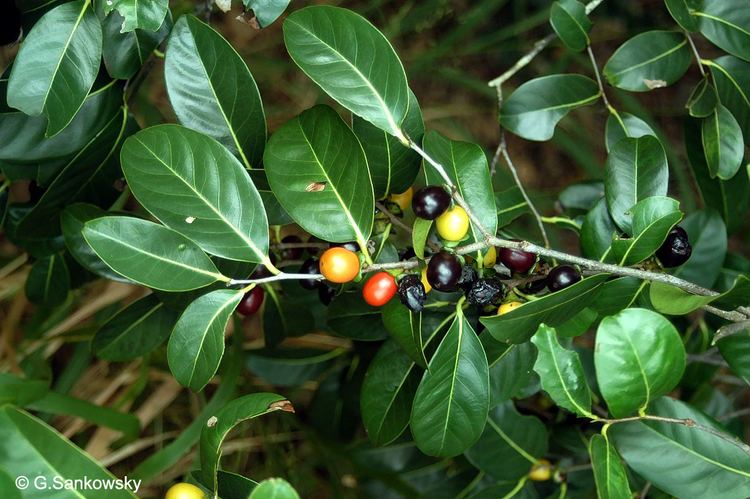 | ||
Lower classifications Japanese Persimmon, Common Persimmon, Date‑plum, Black Sapote, Diospyros blancoi | ||
Planting a persimmons tree diospyros kaki tipo on the earth day event
Diospyros is a genus of over 700 species of deciduous and evergreen trees, shrubs and small bushes. The majority are native to the tropics, with only a few species extending into temperate regions. Depending on their nature, individual species are commonly known as ebony or persimmon trees. Some are valued for their hard, heavy, dark timber, and some for their fruit. Some are useful as ornamentals and many are of local ecological importance.
Contents
- Planting a persimmons tree diospyros kaki tipo on the earth day event
- Taxonomy and etymology
- Chemotaxonomy
- Ecology
- Use by humans
- Selected species
- References
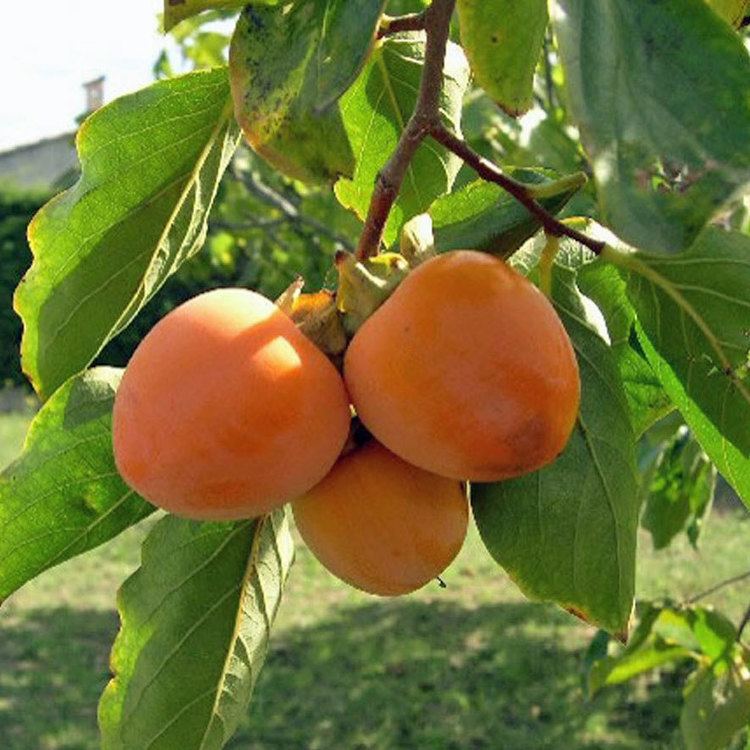
Taxonomy and etymology
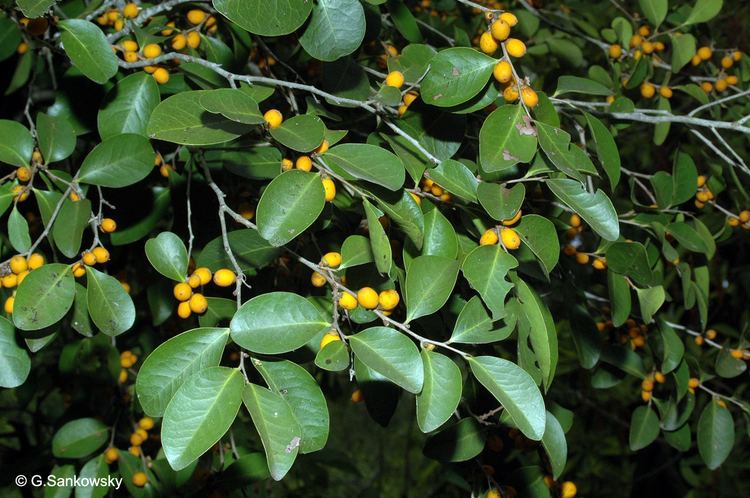
The generic name Diospyros comes from the ancient Greek words dios (διός) and pyros (πυρος). In context, this means more or less "divine fruit" or "divine food", though its literal meaning is more like "wheat of Zeus". The interpretation of Diospyros is sufficiently confusing to have given rise to some curious and inappropriate interpretations such as "God's pear" and "Jove's fire". The name Diospyros was originally applied to the Caucasian persimmon (D. lotus).
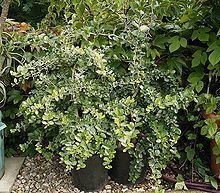
The genus is a large one and the number of species has been estimated variously, depending on the date of the source. The Royal Botanic Gardens, Kew, list has over 1000 entries, including synonyms and items of low confidence. Over 700 species are marked as being assigned with high confidence.
Chemotaxonomy
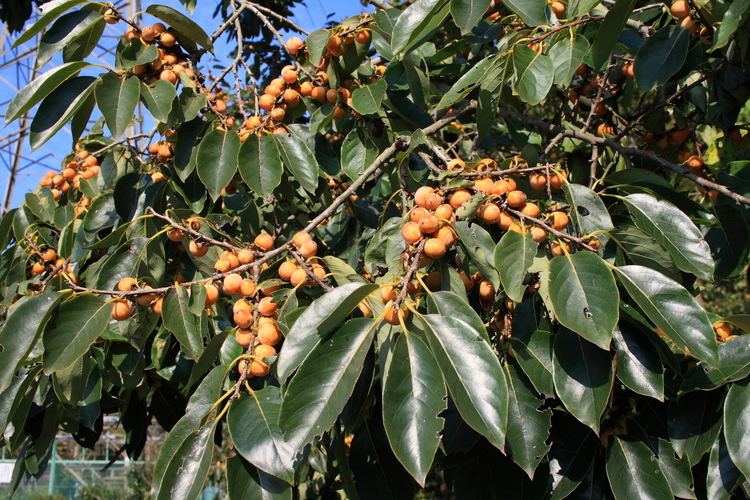
The leaves of Diospyros blancoi have been shown to contain isoarborinol methyl ether (also called cylindrin) and fatty esters of α- and β-amyrin. Both isoarborinol methyl ether and the amyrin mixture demonstrated antimicrobial activity against Escherichia coli, Pseudomonas aeruginosa, Candida albicans, Staphylococcus aureus, and Trichophyton interdigitale. Anti-inflammatory and analgesic properties have also been shown for the isolated amyrin mixture.
Ecology
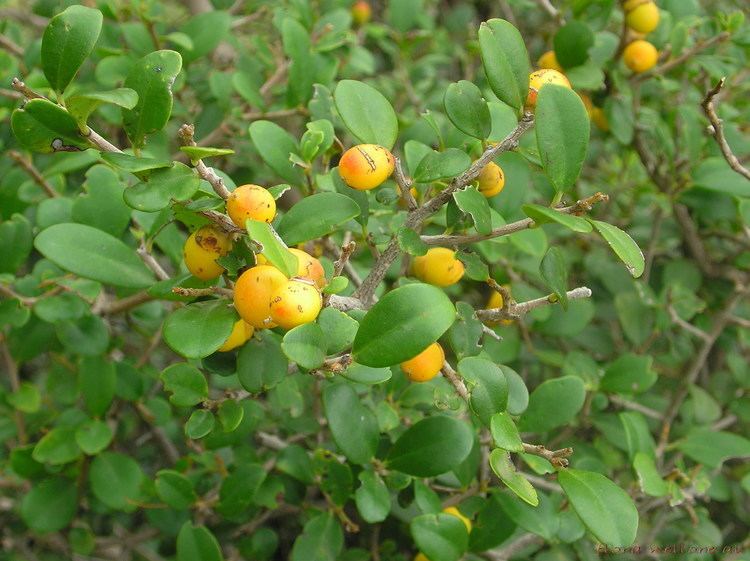
Diospyros species are important and conspicuous trees in many of their native ecosystems, such as lowland dry forests of the former Maui Nui in Hawaii, Caspian Hyrcanian mixed forests, Kathiarbar-Gir dry deciduous forests, Louisiade Archipelago rain forests, Madagascar lowland forests, Narmada Valley dry deciduous forests, New Guinea mangroves or South Western Ghats montane rain forests. The green fruits are rich in tannins and thus avoided by most herbivores; when ripe they are eagerly eaten by many animals however, such as the rare Aders' duiker (Cephalophus adersi).
The foliage is used as food by the larvae of numerous Lepidoptera species:
Arctiidae:
Geometridae:
An economically significant plant pathogen infecting many Diospyros species – D. hispida, Kaki persimmon (D. kaki), Date-plum (D. lotus), Texas persimmon (D. texana), Coromandel ebony (D. melanoxylon) and probably others – is the sac fungus Pseudocercospora kaki, which causes a leaf spot disease.
Use by humans
The genus includes several plants of commercial importance, either for their edible fruit (persimmons) or for their timber (ebony). The latter are divided into two groups in trade: the pure black ebony (notably from D. ebenum, but also several other species), and the striped ebony or Calamander wood (from D. celebica, D. mun and others). Most species in the genus produce little to none of this black ebony-type wood; their hard timber (e.g. of American persimmon, D. virginiana) may still be used on a more limited basis.
Leaves of the Coromandel ebony (D. melanoxylon) are used to roll South Asian beedi cigarettes. Several species are used in herbalism, and D. leucomelas yields the versatile medical compound betulinic acid. Extracts from Diospyros plants have also been proposed as novel anti-viral treatment. Though bees do not play a key role as pollinators, in plantations Diospyros may be of some use as honey plants. D. mollis, locally known as mặc nưa, is used in Vietnam to dye the famous black lãnh Mỹ A silk of Tân Châu district.
The reverence of these trees in their native range is reflected by their use as floral emblems. In Indonesia, D. celebica (Makassar ebony, known locally as Eboni) is the provincial tree of Central Sulawesi, while Ajan kelicung (D. macrophylla) is that of West Nusa Tenggara. The emblem of the Japanese island of Ishigaki is the Yaeyama kokutan (D. ferrea). The Gold apple (D. decandra), called "Trái thị" in Vietnamese, is a tree in the Tấm Cám fable. It is also the provincial tree of Chanthaburi as well as Nakhon Pathom Provinces in Thailand, while the Black-and-white ebony (D. malabarica) is that of Ang Thong Province. The name of the Thai district Amphoe Tha Tako, literally means "District of the Diospyros pier", the latter being a popular local gathering spot.
